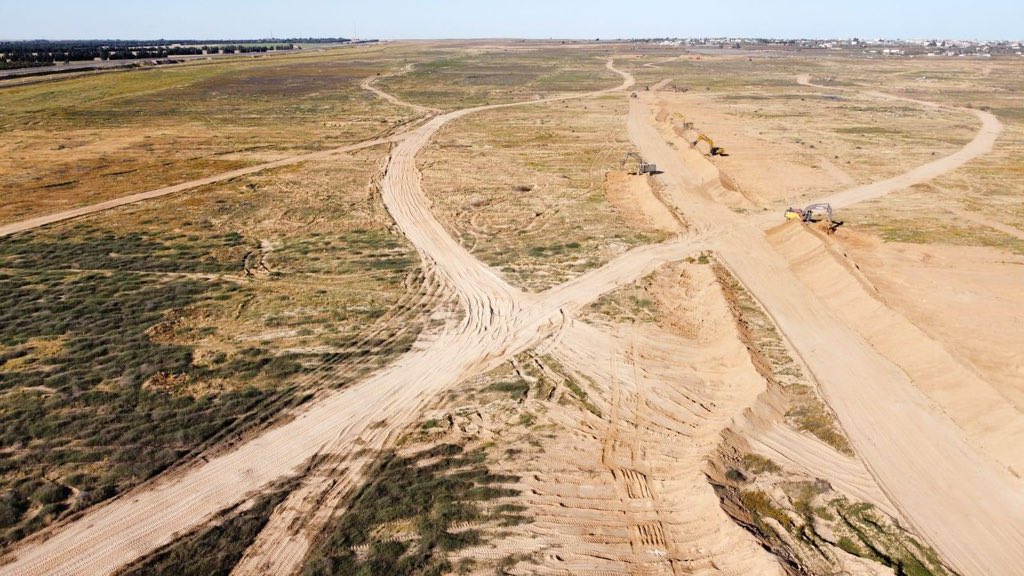
Expansion of Israel’s Morag Corridor Seals Rafah and Places One‑Third of Gaza Under Military Control
A Buffer of Uncertainty: Israel’s Morag Corridor Redraws the Map of Southern Gaza—and the Calculus of Regional Risk
A Dawn Push That Closed the Last Gate
Just after sunrise on Wednesday, armored bulldozers of Israel’s 252nd Armored Division rolled another eight hundred meters west, carving the final slice of the Morag Corridor until their treads ground to a halt on Gaza’s coastal road. In a terse morning communiqué the Israel Defense Forces said the maneuver “completes operational severance” of Rafah, Gaza’s southernmost city, from the rest of the enclave. The statement was overshadowed by a darker metric: Gaza‑based health officials logged 1,652 Palestinian deaths and 4,391 injuries since Israel resumed its offensive on March 18, lifting the war’s toll above 51,000 dead and 116,000 wounded.

The corridor—named for a former Israeli settlement—is no narrow trench. Together with the earlier Netzarim Corridor in central Gaza, it has placed almost one‑third of the territory inside interlocking “security zones” that Israeli officials say will remain “for as long as necessary.” The result is a battlefield now split into three disconnected pockets, each policed by overlapping evacuation orders and artillery arcs.
“There Is No Safe Direction”
Along the corridor’s ragged edge, whole neighborhoods of Khan Yunis and Rafah have emptied overnight. A Gaza‑based emergency doctor, reached by satellite phone, described the exodus in clipped sentences: “Families are walking north, south, in circles—there is no safe direction. We have six amps of morphine left.” Aid convoys have been halted since March 2, leaving United Nations warehouses bare. Two‑thirds of Gaza’s 2.2 million residents now live under evacuation notices or inside declared “no‑go” zones, according to UN OCHA.
Inside Rafah, tents fill every median strip. Portable toilets are scarce; cholera tests are coming back positive. “We are watching a mass‑displacement crisis metastasize into a public‑health catastrophe,” warned a field coordinator for Médicins Sans Frontières, speaking from a clinic improvised in a school stairwell.
Inside the Israeli War Room
Israeli officials cast the Morag strip as the linchpin of a broader strategy they call “controlled fragmentation.” By slicing Rafah Brigade from its counterparts in Khan Yunis, commanders argue, they will choke Hamas supply lines, complicate tunnel‑digging, and—critically—tighten pressure for the release of 59 remaining Israeli hostages. A senior security adviser, declining to be named because cabinet deliberations are classified, put it bluntly: “Buffer equals leverage.”
Comparisons to decades‑old Israeli security belts in southern Lebanon and on the Golan Heights are now explicit. Defense Minister Israel Katz has told lawmakers the corridors will form an “indefinite defensive crust” regardless of cease‑fire diplomacy. Whether that language signals de facto annexation or a bargaining chip remains the question consuming back‑channel talks in Cairo.
Collateral Markets: Pricing the Buffer
Risk desks from Singapore to Chicago were quick to model the corridor’s completion. A veteran portfolio manager at a Tel Aviv asset‑management firm said the math is straightforward: “Every kilometer of permanent buffer reduces near‑term infiltration risk but increases long‑tail diplomatic risk—and traders are having to decide which clock to watch.”
Crude‑oil futures nudged higher in late‑day trading as analysts weighed the potential for spillovers along the Egypt‑Gaza border, a corridor through which 12 percent of global merchandise traffic flows to the Suez. Sovereign‑risk desks flagged fresh uncertainty over Egypt’s security burden should Rafah become the next urban battlefield. Meanwhile, wheat importers in North Africa have quietly begun inquiring about forward coverage in case the humanitarian blockade triggers broader regional unrest.
The Humanitarian Ledger
| Metric (since 18 Mar) | Value |
|---|---|
| Reported Palestinian deaths | 1,652 |
| Reported Palestinian injuries | 4,391 |
| Gaza territory now in “security zones” | ≈ 30 % |
| Functional hospitals (of 36) | 22 |
| ICU bed occupancy | > 95 % |
| Aid trucks permitted since 2 Mar | 0 |
Field epidemiologists warn that critical care will collapse within two weeks unless fuel and antibiotics cross the border. “The corridor’s military utility may soon be measured against excess mortality from disease, not artillery,” one humanitarian analyst cautioned.
Legal and Diplomatic Headwinds
South Africa has filed a fresh dossier at the International Court of Justice alleging “genocidal intent” in Israel’s buffer strategy; the European External Action Service says the total aid cutoff “risks famine on a scale unseen in decades.” Israeli lawyers counter that the corridors mirror international precedents for defensive perimeters and are lawful under exigent military necessity. Human‑rights attorneys retort that necessity never licenses collective punishment.
What Traders—and Policymakers—Are Watching
-
Rafah Ground Push Satellite imagery shows armor assemblies near the Philadelphi Corridor; a full incursion could swell civilian casualties and trigger Egyptian border anxiety.
-
Hostage‑Truce Linkage Israeli officials privately float a staged rollback of corridor depth if Hamas releases hostages. No mechanism exists yet, but bond markets will treat any outline of such a trade as headline‑driven risk.
-
Humanitarian Air‑Bridge Scenarios WHO and ICRC staff in Amman are drafting contingency plans for direct airdrops. A formal request to overfly Israeli‑controlled airspace would test diplomatic lines around Washington and Riyadh.
-
Legal Triggers Should the ICJ issue provisional measures, European fund managers bound by ESG mandates may face forced divestitures from Israeli sovereign and corporate paper.
A Closing Line, and an Open Question
The Morag Corridor, blasted from sand dunes that once echoed only the Mediterranean wind, now stands as a concrete expression of Israel’s belief that security can be engineered one buffer at a time. Yet the very ramparts that promise tactical leverage are accelerating a humanitarian freefall and igniting legal and market fires well beyond Gaza’s borders. Whether the corridor becomes a bargaining chip or a permanent scar will depend on negotiations that, for the moment, appear as immovable as the new berms themselves. Professional risk desks would do well to remember: in the Middle East, maps can—and often do—move faster than models.